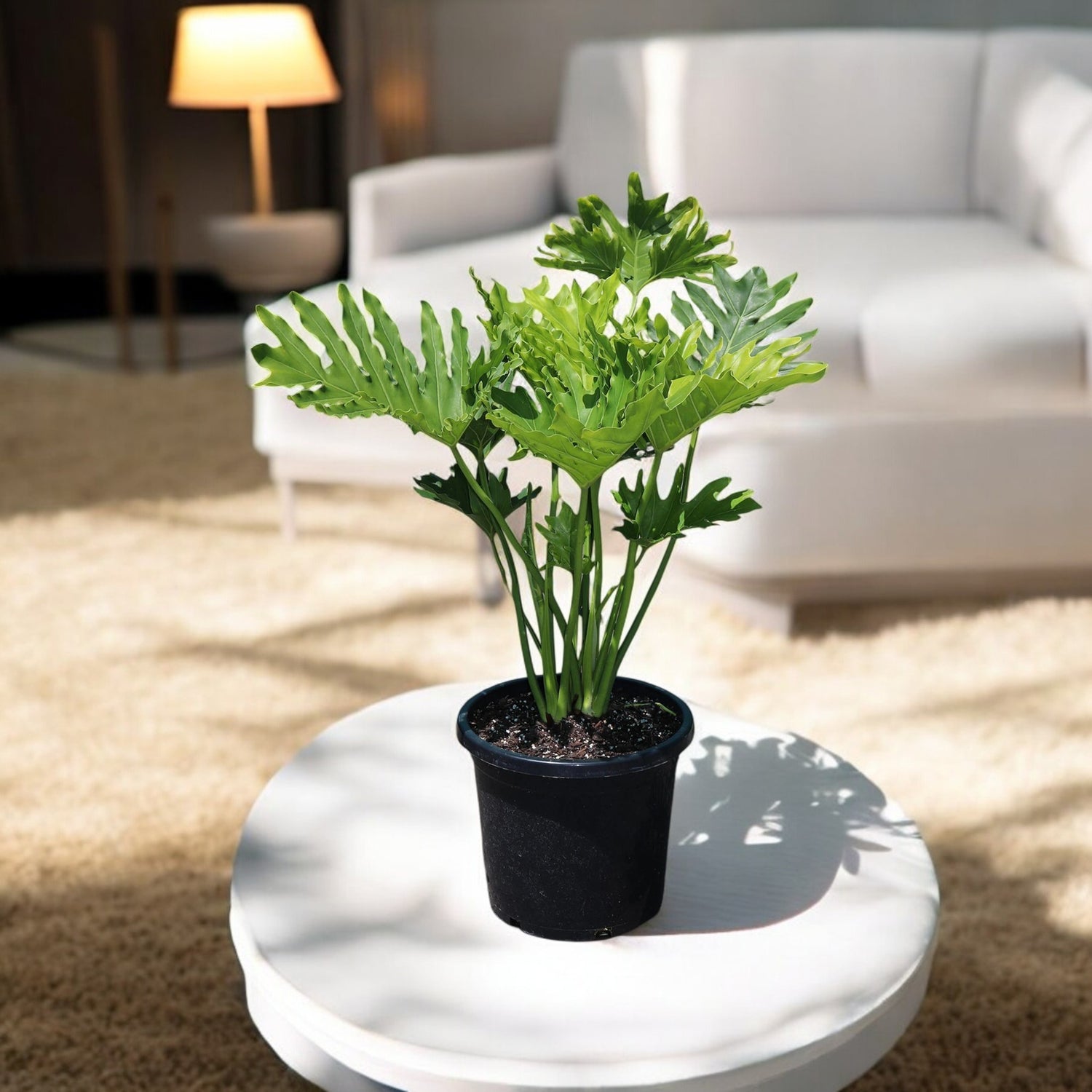

Brief Intro
Buy Philodendron Selloum Plant in Grow Pot - 5 Inch
The Philodendron Selloum Plant is a striking tropical plant admired for its large, deeply lobed green leaves that bring elegance and vibrancy to any indoor space. Potted in a 5-inch grow pot with premium organic soil mix, this plant offers beauty, charm, and a touch of nature to your living or working environment.
About Philodendron Selloum Plant
Also known as the Tree Philodendron, this variety grows upright and bushy, providing a bold visual appeal with its stunning foliage. Its ability to thrive in a variety of lighting conditions makes it a popular choice among indoor gardeners. The Philodendron Selloum is not just aesthetically pleasing but also a low-maintenance option for both beginners and experienced plant enthusiasts.
Care Tips for Philodendron Selloum Plant
- Light: Prefers bright, indirect sunlight but can adapt to low-light conditions. Avoid direct sun to prevent leaf burn.
- Watering: Keep the soil consistently moist, allowing the top inch to dry between waterings. Avoid overwatering.
- Humidity: Thrives in moderate to high humidity. Consider misting or using a humidifier during dry seasons.
- Temperature: Ideal temperature range is 18-30°C. Keep away from cold drafts.
- Fertilizer: Feed with a balanced liquid fertilizer every 4-6 weeks during the growing season.
- Pruning: Remove any yellow or wilted leaves to encourage healthy new growth.
Benefits of Philodendron Selloum Plant
- Visual Appeal: Bold, decorative leaves bring a tropical touch to interiors.
- Air Purification: Known to filter indoor air pollutants.
- Low Maintenance: A resilient plant that is easy to care for.
- Versatile Use: Ideal for living rooms, offices, or any indoor setting.
Placement Suggestions for Philodendron Selloum Plant
- Living Room: A statement piece for corners or tabletops.
- Office: Adds a natural element to workspaces.
- Bedroom: Provides a calming ambiance with its lush greenery.
- Entryways: Creates an inviting atmosphere near doorways.
FAQs:
What is the Return Policy?
This product is Not Returnable. It may be replaced or refunded in case of damage or defective condition on a case to case basis.
How to cancel my order?
Cancellation for Live Plants is allowed before the dispatched. You can request cancellation through Your Orders page or by contacting customer service within that time.
What if i received damage product?
If a product is received in a damaged or defective condition, you need to contact the customer service within 1 days of delivery. Free of cost replacement or refund claim is available to you.



